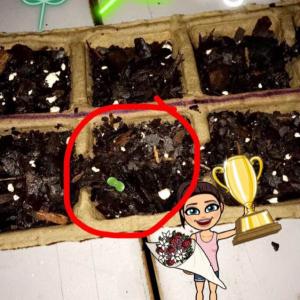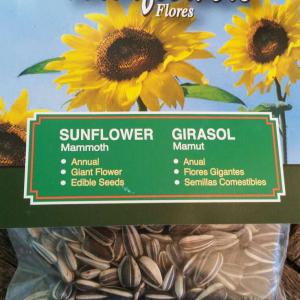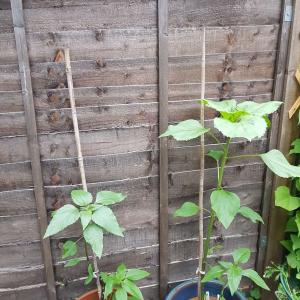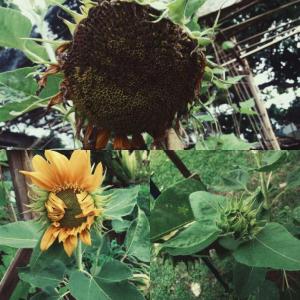文章
Dummer. ゛☀
2017年08月07日

Gerbera is a genus of the family of sunflowers, Daisies and Asters - Asteraceae, with a wide distribution from Africa to Madagascar, tropical Asia and South America. Through hybridization, Gerberas are available in a massive array of colors.
Some Interesting Facts About Gerberas
Having a long vase life, Gerbera flowers are widely used in the Cut Flower Industry. Gerberas are great flowers for adding color to any room or garden.
Gerberas are also referred to as Gerbera Daisies, daisy being a general name for all species in the family Asteraceae, to which Gerberas belong.
Gerbera flowers often measure 7 inches (17.8 cm) across.
Gerberas come in a wide range of colors - from light to dark yellow, orange, pink, brilliant scarlet, deep red, and many more.
Gerberas can be used in landscapes as bedding plants for borders and flower beds or as Cut Flowers for table arrangements.
Gerberas are native to Transvaal, South Africa.
Hybrid Gerbera varieties cloned through tissue culture are uniform, and have long-lasting flowers with thick peduncles that are not light sensitive; hence, flowers remain open in the dark, lending themselves to indoor use in flower arrangements.
About Gerbera Flower
Gerberas are perennial flowering plants featuring a large capitulum with striking, 2-lipped ray florets. The capitulum on the Gerberas has the appearance of a single flower, but is actually a cluster of hundreds of individual flowers. The morphology of the flowers varies depending on their position in the capitulum of the Gerberas.
Various Forms of Gerbera Flowers
Gerberas come in various forms. Broadly, they can be put into four groups-
Single Flowers - These Gerberas have a row of non-overlapping petals (ray florets) with a green center (disc florets). These are the most common gerberas available in the market.
Double or duplex - These Gerberas have a double row of overlapping petals with a green, black, or dark red eye.
Crested doubles - These doubles contain two rows of overlapping petals with one or more inner rows of shorter petals with a green, black, or dark red eye.
Full crested doubles - These have solid overlapping rows of petals with an inner row diminishing in size, covering the eye entirely.
Growing Gerberas
The most inexpensive way to produce gerberas is from seed obtained from reputable seed suppliers.
Seeds should be germinated in an artificial growing medium. Germinating seeds in field sand or field sand mixed with materials such as perlite and/or peat moss is not recommended because field sand is usually not sterile. Artificial growing media that are sterile, lightweight, and have good water retention capacity and drainage can be purchased in garden supply stores. These materials often have fertilizers incorporated.
The medium can be placed in flats or pots that have drainage holes. Make shallow rows in the medium approximately twice the depth of the diameter of the seed, sow seeds in the rows, cover lightly with extra medium and water carefully.
After seeds are planted and watered, cover the container with a sheet of glass or clear plastic and place the germination container approximately 18 inches (45.7 cm) below a fluorescent light. Check the medium daily for moisture and for signs of seed germination.
The medium should never be allowed to dry, especially when gerbera seeds are starting to germinate. When watering is necessary, apply a sufficient amount to allow excess water to drain out of the container. Any water that collects in the saucer beneath the germination container should be discarded.
Tall and spindly seedlings can be avoided by transplanting seedlings to small pots as soon as the first true leaves appear. Seedlings can be grown in small pots until they are large enough to transplant into flower beds.

Some Interesting Facts About Gerberas
Having a long vase life, Gerbera flowers are widely used in the Cut Flower Industry. Gerberas are great flowers for adding color to any room or garden.
Gerberas are also referred to as Gerbera Daisies, daisy being a general name for all species in the family Asteraceae, to which Gerberas belong.
Gerbera flowers often measure 7 inches (17.8 cm) across.
Gerberas come in a wide range of colors - from light to dark yellow, orange, pink, brilliant scarlet, deep red, and many more.
Gerberas can be used in landscapes as bedding plants for borders and flower beds or as Cut Flowers for table arrangements.
Gerberas are native to Transvaal, South Africa.
Hybrid Gerbera varieties cloned through tissue culture are uniform, and have long-lasting flowers with thick peduncles that are not light sensitive; hence, flowers remain open in the dark, lending themselves to indoor use in flower arrangements.

About Gerbera Flower
Gerberas are perennial flowering plants featuring a large capitulum with striking, 2-lipped ray florets. The capitulum on the Gerberas has the appearance of a single flower, but is actually a cluster of hundreds of individual flowers. The morphology of the flowers varies depending on their position in the capitulum of the Gerberas.
Various Forms of Gerbera Flowers
Gerberas come in various forms. Broadly, they can be put into four groups-
Single Flowers - These Gerberas have a row of non-overlapping petals (ray florets) with a green center (disc florets). These are the most common gerberas available in the market.
Double or duplex - These Gerberas have a double row of overlapping petals with a green, black, or dark red eye.
Crested doubles - These doubles contain two rows of overlapping petals with one or more inner rows of shorter petals with a green, black, or dark red eye.
Full crested doubles - These have solid overlapping rows of petals with an inner row diminishing in size, covering the eye entirely.

Growing Gerberas
The most inexpensive way to produce gerberas is from seed obtained from reputable seed suppliers.
Seeds should be germinated in an artificial growing medium. Germinating seeds in field sand or field sand mixed with materials such as perlite and/or peat moss is not recommended because field sand is usually not sterile. Artificial growing media that are sterile, lightweight, and have good water retention capacity and drainage can be purchased in garden supply stores. These materials often have fertilizers incorporated.
The medium can be placed in flats or pots that have drainage holes. Make shallow rows in the medium approximately twice the depth of the diameter of the seed, sow seeds in the rows, cover lightly with extra medium and water carefully.
After seeds are planted and watered, cover the container with a sheet of glass or clear plastic and place the germination container approximately 18 inches (45.7 cm) below a fluorescent light. Check the medium daily for moisture and for signs of seed germination.
The medium should never be allowed to dry, especially when gerbera seeds are starting to germinate. When watering is necessary, apply a sufficient amount to allow excess water to drain out of the container. Any water that collects in the saucer beneath the germination container should be discarded.
Tall and spindly seedlings can be avoided by transplanting seedlings to small pots as soon as the first true leaves appear. Seedlings can be grown in small pots until they are large enough to transplant into flower beds.
0
0
文章
Dummer. ゛☀
2017年08月06日

BOTANICAL NAME: Helianthus
PLANT TYPE: Flower
SUN EXPOSURE: Full Sun
SOIL TYPE: LoamySandy
SOIL PH: Alkaline/BasicNeutral
FLOWER COLOR: Yellow
BLOOM TIME: Summer
SPECIAL FEATURES: Attracts BirdsAttracts Butterflies
An annual plant, sunflowers have big, daisy-like flower faces of bright yellow petals (and occasionally red) and brown centers that ripen into heavy heads filled with seeds.
Tall and coarse, the plants have creeping or tuberous roots and large, bristly leaves. Some sunflowers grow to over 16 feet in height, though there are also varieties today that have been developed for small spaces and containers.
Most sunflowers are remarkably tough and easy to grow as long as the soil is not waterlogged. Most are heat- and drought-tolerant. They make excellent cut flowers and many are attractive to bees and birds.
PLANTING
Sunflowers grow best in locations with direct sun (6 to 8 hours per day); they prefer long, hot summers to flower well.
Sunflowers have long tap roots which need to stretch out so the plants prefer well-dug, loose, well-draining soil; in preparing a bed, dig down 2 feet in depth and about 3 feet across to ensure the soil isn’t too compact.
Find a well-drained location, and prepare your soil by digging an area of about 2-3 feet in circumference to a depth of about 2 feet.
Though they’re not too fussy, sunflowers thrive in slightly acidic to somewhat alkaline (pH 6.0 to 7.5).
Sunflowers are heavy feeders so the soil needs to be nutrient-rich with organic matter or composted (aged) manure. Or, work in a slow release granular fertilizer 8 inches deep into your soil.
If possible, put seeds in a spot that is sheltered from strong winds, perhaps along a fence or near a building.
Before planting, decide whether or not you want to grow a fun sunflower tower.
PLANTING SUNFLOWER SEEDS
It’s best to sow sunflower seeds directly into the soil after the danger of spring frost is past. Ideally, the soil temperature has reached 55 to 60 degrees F.
Give plants plenty of room, especially for low-growing varieties that will branch out. Make rows about 30 inches apart. (For very small varieties, plant closer together.)
Plant the large seeds no more than 1 inch deep about 6 inches apart after it has thoroughly warmed, from mid-April to late May. You can plant multiple seeds and thin them to the strongest contenders when the plants are six inches tall.
A light application of fertilizer mixed in at planting time will encourage strong root growth to protect them from blowing over in the wind.
Experiment with plantings staggered over 5 to 6 weeks to keep enjoying continuous blooms.
If you see birds scratching around for the seeds, spread netting over the planted area until seeds germinate. See more ways to keep birds away from your garden.
CARE
While the plant is small, water around the root zone, about 3 to 4 in. from the plant. To protect the plant, it may help to put snail or slug bait around the stem.
Once the plant is established, water deeply though infrequently to encourage deep rooting. Unless the weather is exceptionally wet or dry, water once a week with several gallons of water.
Feed plants only sparingly; overfertilization can cause stems to break in the fall. You can add diluted fertilizer into the water, though avoid getting the fertilizer near the plant’s base; it may help to build a moat in a circle around the plant about 18 inches out.
Tall species and cultivars require support. Bamboo stakes are a good choice for any plant that has a strong, single stem and needs support for a short period of time.
PESTS/DISEASES
Birds and squirrels will show interest in the seeds. If you plan to use the seeds, deter critters with barrier devices. As seed heads mature and flowers droop, you can cover each one with white polyspun garden fleece.
If you have deer, keep them at bay with a tall wire barrier.
Sunflowers are relatively insect-free. A small gray moth sometimes lays its eggs in the blossoms. Pick the worms from the plants.
Downy mildew, rust, and powdery mildew can also affect the plants. If fungal diseases are spotted early, spray with a general garden fungicide
PLANT TYPE: Flower
SUN EXPOSURE: Full Sun
SOIL TYPE: LoamySandy
SOIL PH: Alkaline/BasicNeutral
FLOWER COLOR: Yellow
BLOOM TIME: Summer
SPECIAL FEATURES: Attracts BirdsAttracts Butterflies
An annual plant, sunflowers have big, daisy-like flower faces of bright yellow petals (and occasionally red) and brown centers that ripen into heavy heads filled with seeds.
Tall and coarse, the plants have creeping or tuberous roots and large, bristly leaves. Some sunflowers grow to over 16 feet in height, though there are also varieties today that have been developed for small spaces and containers.
Most sunflowers are remarkably tough and easy to grow as long as the soil is not waterlogged. Most are heat- and drought-tolerant. They make excellent cut flowers and many are attractive to bees and birds.

PLANTING
Sunflowers grow best in locations with direct sun (6 to 8 hours per day); they prefer long, hot summers to flower well.
Sunflowers have long tap roots which need to stretch out so the plants prefer well-dug, loose, well-draining soil; in preparing a bed, dig down 2 feet in depth and about 3 feet across to ensure the soil isn’t too compact.
Find a well-drained location, and prepare your soil by digging an area of about 2-3 feet in circumference to a depth of about 2 feet.
Though they’re not too fussy, sunflowers thrive in slightly acidic to somewhat alkaline (pH 6.0 to 7.5).
Sunflowers are heavy feeders so the soil needs to be nutrient-rich with organic matter or composted (aged) manure. Or, work in a slow release granular fertilizer 8 inches deep into your soil.
If possible, put seeds in a spot that is sheltered from strong winds, perhaps along a fence or near a building.
Before planting, decide whether or not you want to grow a fun sunflower tower.

PLANTING SUNFLOWER SEEDS
It’s best to sow sunflower seeds directly into the soil after the danger of spring frost is past. Ideally, the soil temperature has reached 55 to 60 degrees F.
Give plants plenty of room, especially for low-growing varieties that will branch out. Make rows about 30 inches apart. (For very small varieties, plant closer together.)
Plant the large seeds no more than 1 inch deep about 6 inches apart after it has thoroughly warmed, from mid-April to late May. You can plant multiple seeds and thin them to the strongest contenders when the plants are six inches tall.
A light application of fertilizer mixed in at planting time will encourage strong root growth to protect them from blowing over in the wind.
Experiment with plantings staggered over 5 to 6 weeks to keep enjoying continuous blooms.
If you see birds scratching around for the seeds, spread netting over the planted area until seeds germinate. See more ways to keep birds away from your garden.

CARE
While the plant is small, water around the root zone, about 3 to 4 in. from the plant. To protect the plant, it may help to put snail or slug bait around the stem.
Once the plant is established, water deeply though infrequently to encourage deep rooting. Unless the weather is exceptionally wet or dry, water once a week with several gallons of water.
Feed plants only sparingly; overfertilization can cause stems to break in the fall. You can add diluted fertilizer into the water, though avoid getting the fertilizer near the plant’s base; it may help to build a moat in a circle around the plant about 18 inches out.
Tall species and cultivars require support. Bamboo stakes are a good choice for any plant that has a strong, single stem and needs support for a short period of time.
PESTS/DISEASES
Birds and squirrels will show interest in the seeds. If you plan to use the seeds, deter critters with barrier devices. As seed heads mature and flowers droop, you can cover each one with white polyspun garden fleece.
If you have deer, keep them at bay with a tall wire barrier.
Sunflowers are relatively insect-free. A small gray moth sometimes lays its eggs in the blossoms. Pick the worms from the plants.
Downy mildew, rust, and powdery mildew can also affect the plants. If fungal diseases are spotted early, spray with a general garden fungicide
1
0
文章
Dummer. ゛☀
2017年08月04日

Sunflowers are such a colorful and whimsical addition to every garden. They’re easy to grow from seed, and make excellent cut flowers.
There are hundreds of different varieties of sunflowers, including perennial varieties that come back every year. Home gardeners most commonly plant annual varieties (which last only one growing season), including both dwarf and tall varieties with multiple branches and dozens of blooms (perfect for cutting). The types of sunflowers grown especially for seed harvesting also fall into the category of annual flowers. You can find sunflowers with flower colors ranging from pale lemon yellow to orange, pink, burgundy, and bright yellow. There are also bi-color and multi-color varieties.
No matter which you choose, let us teach you how to grow sunflowers for weeks of gorgeous flowers.
Where to Plant Sunflowers
Sunflowers grow best in full, bright sun, and in evenly moist, well-drained soil. The amount of space they need depends on which varieties you are growing. Branching types with multiple blooms on one stem need more space horizontally than large single-flowered types. Take care to select a spot to grow taller varieties where they won’t throw too much shade on other shorter, sun-loving plants. The north side of a flower border is almost always a good spot.
When to Plant Sunflowers
Sunflowers are warm-weather plants. You can plant sunflowers outside at the same time you plant peppers, tomatoes, eggplants, zinnias, and other warm-season vegetables and flowers. For a longer sunflower bloom period, plant a row or grouping of sunflowers every two weeks for four to six weeks during the early summer.
How to Prepare the Soil for Planting Sunflowers
Make sure your plants get off to the best start! Prepare new in-ground planting areas with Miracle-Gro® All Purpose Garden Soil, mixing 3 inches of garden soil into the top 6 to 8 inches of native soil. This will feed new plants and help build strong roots, both of which will mean big, beautiful blooms!

How to Plant Sunflowers
While you can start sunflowers from seed indoors, it’s just as easy to grow them from seed outdoors. Plant sunflower seeds directly into the garden when the soil is warm—at least fifty degrees Fahrenheit. Use your thumb to push seeds 1 to 2 inches deep into the soil. Depth and spacing depends on the variety, so read the instructions on the seed package.
How to Water Sunflowers
Water thoroughly at the time of planting and keep the planting area about as moist as a wrung-out sponge (not soggy) while the seeds are sprouting. Most sunflowers are fairly drought-tolerant once established, but will bloom better with regular water. To be on the safe side, water sunflowers well when the top two inches of soil are dry.
How to Feed Sunflowers
While sunflowers are not big feeders, you will get more and better blooms if you make sure they get a steady stream of nutrition. A month after planting, begin feeding sunflowers with Miracle-Gro® Water Soluble All Purpose Plant Food. Make sure to follow the directions on the package.

How to Stake Sunflowers
Whether or not you need to stake your sunflowers depends on how tall they get, the strength of the stems, and the branching pattern. If you’re growing a bunch of sunflowers for cut flowers, you can plant the seeds and then create a latticework of stakes and twine for the plants to grow up through. Create two rows of staggered stakes with 3 feet in between each stake. Run twine around the stakes to create a wide lattice. You can also stake individual plants that are beginning to droop by placing a sturdy stake 3 inches from the plant stem and tying the stem to the stake, loosely, with twine in a couple of places.

How to Avoid Pest Problems with Sunflowers
Squirrels and chipmunks can be a problem when you first plant sunflower seeds, as they love to dig them up and eat them. Shake some ground cayenne pepper on the ground around where you’ve planted the seeds. If that doesn’t deter them, try starting seeds indoors and then planting them outside once they have sprouted. If you’re growing sunflowers for seed, these pests can be a problem near the time of harvest as well. When the outer petals dry up, cover the large flower heads with lightweight cloth tied around the stem.
How to Harvest Sunflower Seeds
Cut the large flower heads off when the back of the large flower disk has turned black and the seed heads are dry. Leave in a cool, dry place for a few days to completely dry out, and then remove the seeds by gently rubbing the flower heads with your thumbs. Keep dried seeds in a breathable paper or cloth bag to prevent mold growth.
How to Grow Sunflowers: Recap
Plant in a sunny location with moist, well-drained soil.
Prepare the existing soil by adding Miracle-Gro® All Purpose Garden Soil.
Sow seeds directly in the garden when the soil warms up in the spring.
Water seeds at the time of planting and regularly throughout the growing season.
Feed sunflowers with Miracle-Gro® Water Soluble All Purpose Plant Food, starting a month after planting.
Stake sunflowers if they have multiple branches or heavy flower heads.
Prevent pests from digging up newly planted seeds and from eating seed heads you hope to harvest.
Harvest flower heads when the back has turned black and the seeds have dried out.
There are hundreds of different varieties of sunflowers, including perennial varieties that come back every year. Home gardeners most commonly plant annual varieties (which last only one growing season), including both dwarf and tall varieties with multiple branches and dozens of blooms (perfect for cutting). The types of sunflowers grown especially for seed harvesting also fall into the category of annual flowers. You can find sunflowers with flower colors ranging from pale lemon yellow to orange, pink, burgundy, and bright yellow. There are also bi-color and multi-color varieties.
No matter which you choose, let us teach you how to grow sunflowers for weeks of gorgeous flowers.

Where to Plant Sunflowers
Sunflowers grow best in full, bright sun, and in evenly moist, well-drained soil. The amount of space they need depends on which varieties you are growing. Branching types with multiple blooms on one stem need more space horizontally than large single-flowered types. Take care to select a spot to grow taller varieties where they won’t throw too much shade on other shorter, sun-loving plants. The north side of a flower border is almost always a good spot.
When to Plant Sunflowers
Sunflowers are warm-weather plants. You can plant sunflowers outside at the same time you plant peppers, tomatoes, eggplants, zinnias, and other warm-season vegetables and flowers. For a longer sunflower bloom period, plant a row or grouping of sunflowers every two weeks for four to six weeks during the early summer.
How to Prepare the Soil for Planting Sunflowers
Make sure your plants get off to the best start! Prepare new in-ground planting areas with Miracle-Gro® All Purpose Garden Soil, mixing 3 inches of garden soil into the top 6 to 8 inches of native soil. This will feed new plants and help build strong roots, both of which will mean big, beautiful blooms!

How to Plant Sunflowers
While you can start sunflowers from seed indoors, it’s just as easy to grow them from seed outdoors. Plant sunflower seeds directly into the garden when the soil is warm—at least fifty degrees Fahrenheit. Use your thumb to push seeds 1 to 2 inches deep into the soil. Depth and spacing depends on the variety, so read the instructions on the seed package.
How to Water Sunflowers
Water thoroughly at the time of planting and keep the planting area about as moist as a wrung-out sponge (not soggy) while the seeds are sprouting. Most sunflowers are fairly drought-tolerant once established, but will bloom better with regular water. To be on the safe side, water sunflowers well when the top two inches of soil are dry.
How to Feed Sunflowers
While sunflowers are not big feeders, you will get more and better blooms if you make sure they get a steady stream of nutrition. A month after planting, begin feeding sunflowers with Miracle-Gro® Water Soluble All Purpose Plant Food. Make sure to follow the directions on the package.

How to Stake Sunflowers
Whether or not you need to stake your sunflowers depends on how tall they get, the strength of the stems, and the branching pattern. If you’re growing a bunch of sunflowers for cut flowers, you can plant the seeds and then create a latticework of stakes and twine for the plants to grow up through. Create two rows of staggered stakes with 3 feet in between each stake. Run twine around the stakes to create a wide lattice. You can also stake individual plants that are beginning to droop by placing a sturdy stake 3 inches from the plant stem and tying the stem to the stake, loosely, with twine in a couple of places.

How to Avoid Pest Problems with Sunflowers
Squirrels and chipmunks can be a problem when you first plant sunflower seeds, as they love to dig them up and eat them. Shake some ground cayenne pepper on the ground around where you’ve planted the seeds. If that doesn’t deter them, try starting seeds indoors and then planting them outside once they have sprouted. If you’re growing sunflowers for seed, these pests can be a problem near the time of harvest as well. When the outer petals dry up, cover the large flower heads with lightweight cloth tied around the stem.
How to Harvest Sunflower Seeds
Cut the large flower heads off when the back of the large flower disk has turned black and the seed heads are dry. Leave in a cool, dry place for a few days to completely dry out, and then remove the seeds by gently rubbing the flower heads with your thumbs. Keep dried seeds in a breathable paper or cloth bag to prevent mold growth.

How to Grow Sunflowers: Recap
Plant in a sunny location with moist, well-drained soil.
Prepare the existing soil by adding Miracle-Gro® All Purpose Garden Soil.
Sow seeds directly in the garden when the soil warms up in the spring.
Water seeds at the time of planting and regularly throughout the growing season.
Feed sunflowers with Miracle-Gro® Water Soluble All Purpose Plant Food, starting a month after planting.
Stake sunflowers if they have multiple branches or heavy flower heads.
Prevent pests from digging up newly planted seeds and from eating seed heads you hope to harvest.
Harvest flower heads when the back has turned black and the seeds have dried out.
2
0













